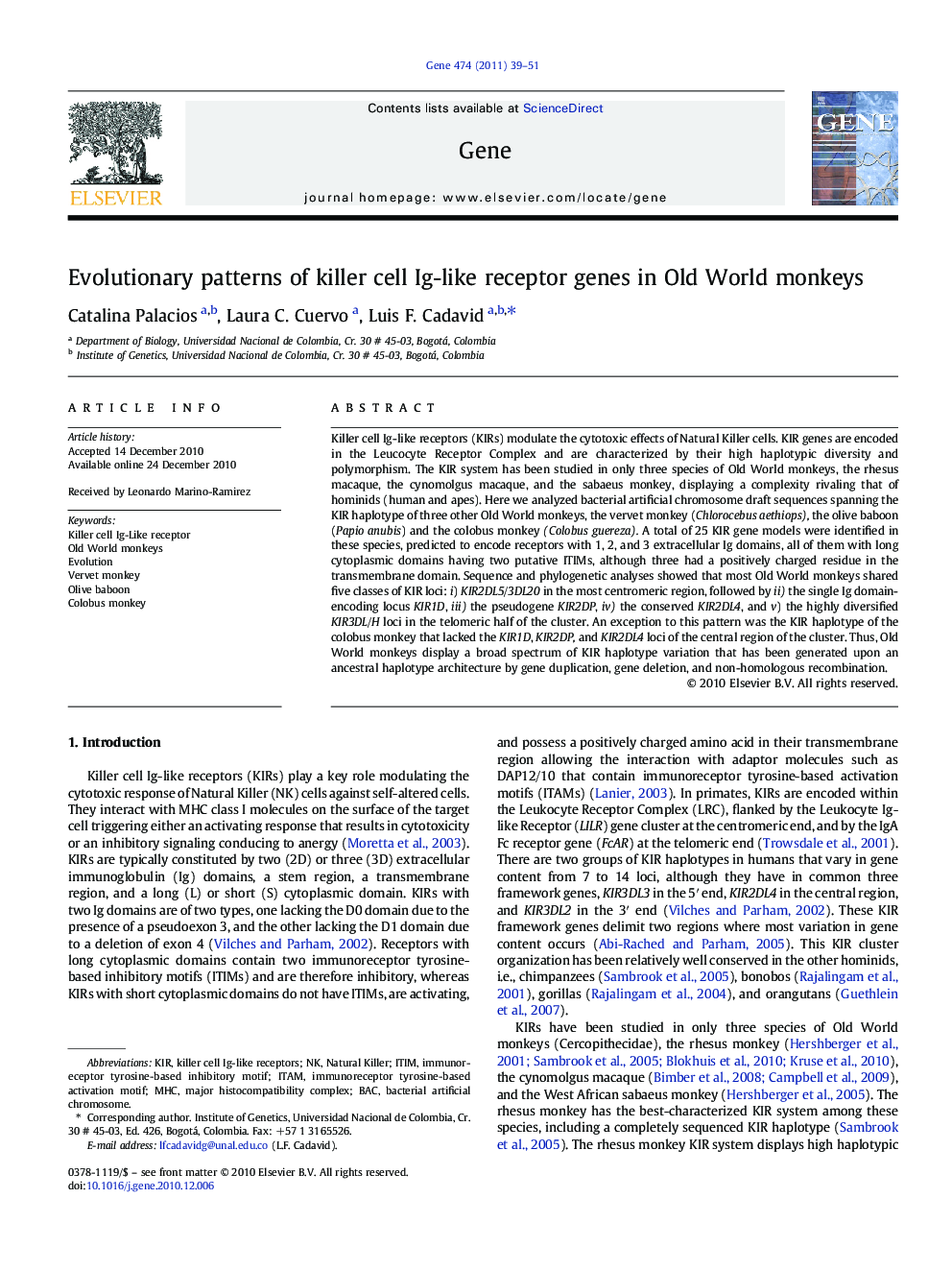| کد مقاله | کد نشریه | سال انتشار | مقاله انگلیسی | نسخه تمام متن |
|---|---|---|---|---|
| 2818492 | 1569862 | 2011 | 13 صفحه PDF | دانلود رایگان |

Killer cell Ig-like receptors (KIRs) modulate the cytotoxic effects of Natural Killer cells. KIR genes are encoded in the Leucocyte Receptor Complex and are characterized by their high haplotypic diversity and polymorphism. The KIR system has been studied in only three species of Old World monkeys, the rhesus macaque, the cynomolgus macaque, and the sabaeus monkey, displaying a complexity rivaling that of hominids (human and apes). Here we analyzed bacterial artificial chromosome draft sequences spanning the KIR haplotype of three other Old World monkeys, the vervet monkey (Chlorocebus aethiops), the olive baboon (Papio anubis) and the colobus monkey (Colobus guereza). A total of 25 KIR gene models were identified in these species, predicted to encode receptors with 1, 2, and 3 extracellular Ig domains, all of them with long cytoplasmic domains having two putative ITIMs, although three had a positively charged residue in the transmembrane domain. Sequence and phylogenetic analyses showed that most Old World monkeys shared five classes of KIR loci: i) KIR2DL5/3DL20 in the most centromeric region, followed by ii) the single Ig domain-encoding locus KIR1D, iii) the pseudogene KIR2DP, iv) the conserved KIR2DL4, and v) the highly diversified KIR3DL/H loci in the telomeric half of the cluster. An exception to this pattern was the KIR haplotype of the colobus monkey that lacked the KIR1D, KIR2DP, and KIR2DL4 loci of the central region of the cluster. Thus, Old World monkeys display a broad spectrum of KIR haplotype variation that has been generated upon an ancestral haplotype architecture by gene duplication, gene deletion, and non-homologous recombination.
Journal: Gene - Volume 474, Issues 1–2, 15 March 2011, Pages 39–51